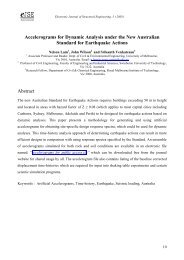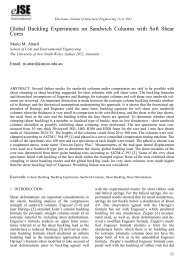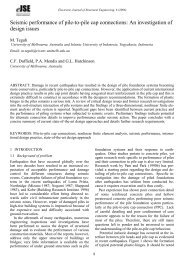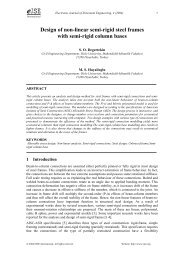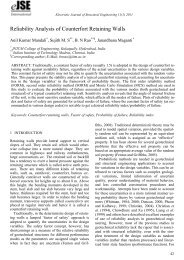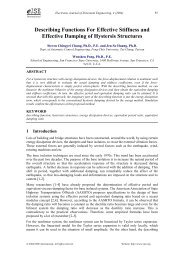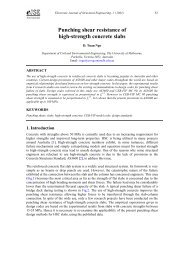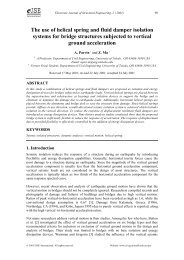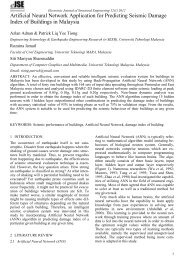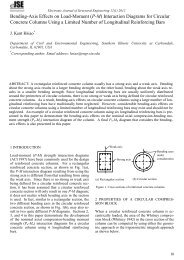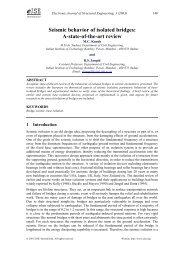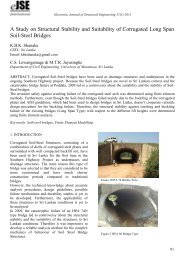You also want an ePaper? Increase the reach of your titles
YUMPU automatically turns print PDFs into web optimized ePapers that Google loves.
11. In this dialog box:<br />
• In the Horizontal Range area type 2 in the Max edit box.<br />
• In the Axis Labels area type Control Joint Displacement in the Horizontal edit box.<br />
• In the Axis Labels area type Resultant Base Shear in the Vertical edit box.<br />
• Click the OK button to change the axis labels and range.<br />
12. Now we will reset the default axis labels and range. Click the Override Axis Labels/Range<br />
button. The Override Axis Labels and Range dialog box appears.<br />
13. In this dialog box:<br />
• Click the Reset Defaults button.<br />
• Click the OK button.<br />
14. Select PUSH3 from the Static Pushover Case drop-down box. The plot changes to that for<br />
PUSH3. Recall that PUSH3 is the uniform acceleration in the X-direction.<br />
Note: If at any time you want to check and see the definition of a pushover load case click<br />
the Done button to close the Pushover Curve dialog box. Then, from the Define menu<br />
select Static Pushover Cases..., and when the Define Static Pushover Cases dialog box<br />
appears, select the pushover case you are interested in, and click the Modify/Show<br />
Pushover button.<br />
15. Review the base shear versus control displacement curves for the other pushover load cases.<br />
16 Select PUSH2 from the Static Pushover Case drop-down box.<br />
17. Select the Capacity Spectrum option in the Plot Type area. As shown in Figure D-8, the plot<br />
changes and the Demand Spectrum area and the Damping Parameters area are now active.<br />
Note: When the capacity spectrum option is chosen, the pushover curve is displayed in<br />
ADRS (Acceleration-Displacement Response Spectrum) format. Refer to ATC-40 for a<br />
discussion of this format which is essentially a plot of spectral acceleration versus<br />
spectral displacement. In <strong>SAP2000</strong>, the force-displacement pushover curve is converted<br />
to the ADRS format by converting the resultant base shear to a spectral acceleration , Sa,<br />
and the control displacement in the control direction to a spectral displacement, Sd,<br />
generally based on equations 8-1 thru 8-4 in ATC-40.<br />
<strong>SAP2000</strong> <strong>Web</strong> <strong>Tutorial</strong> 1 114



